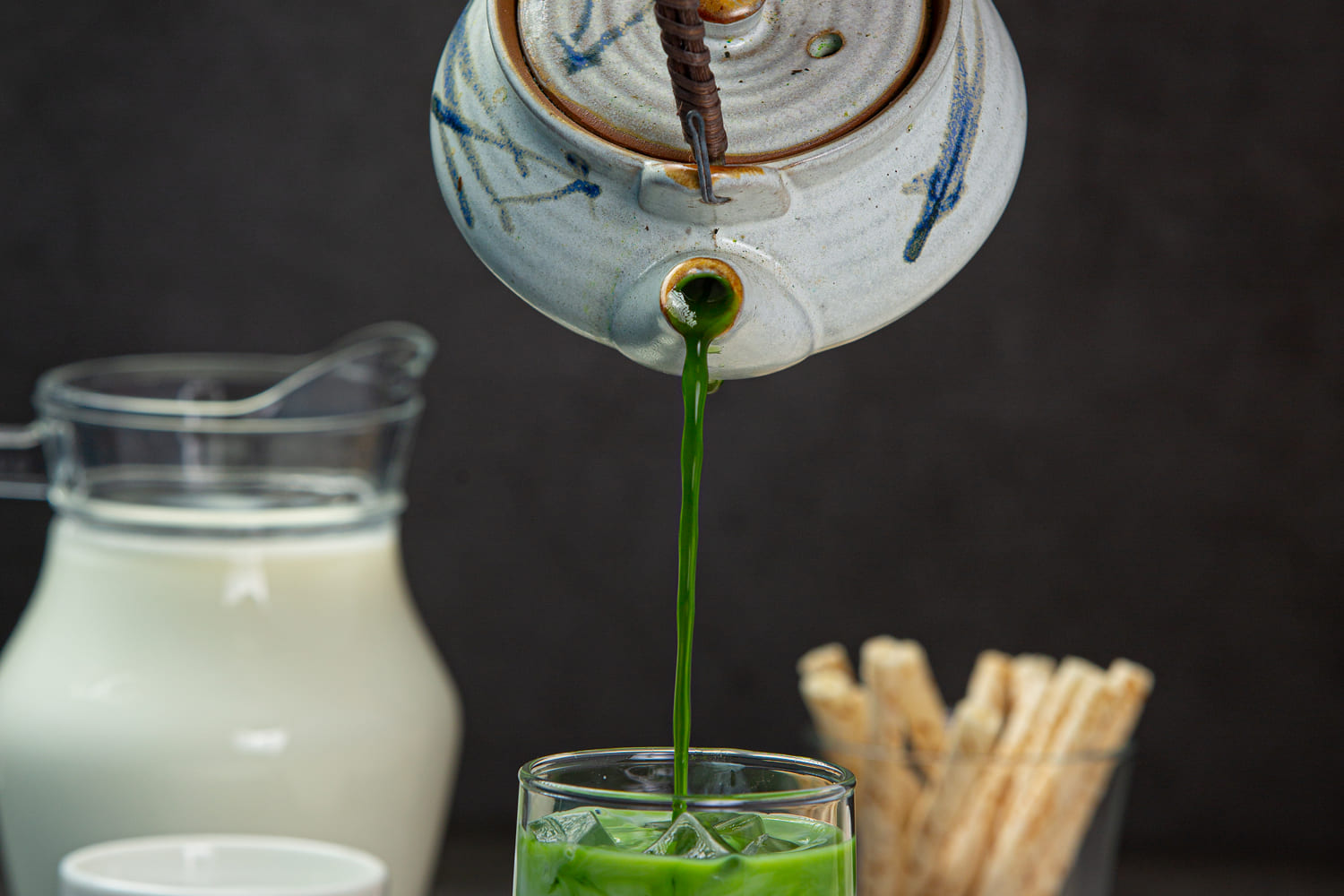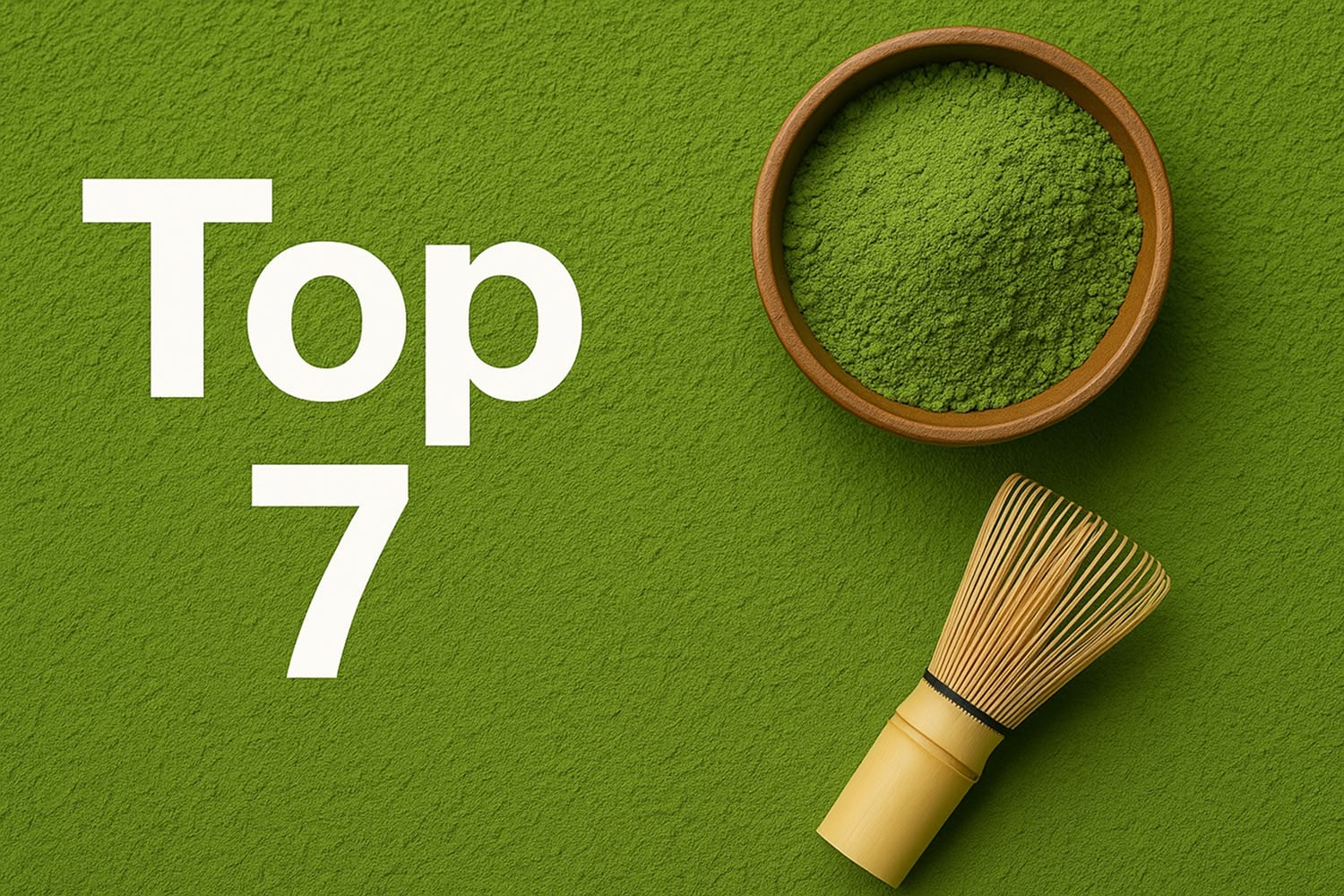Qu'elle est l'origine du thé matcha ?


Matcha Tea: What Exactly Is It, and Why Is Everyone Talking About It?
Today, matcha is everywhere: in our morning lattes, in health recipes on Instagram, on the shelves of organic grocery stores…
But where does matcha tea actually come from? Why has this fine, intense green powder become a staple in wellness routines?
If you're someone who likes to understand what you're consuming, this article is for you.
We’ll walk you through the real story of matcha — from its spiritual roots to its modern-day use.
You'll also see what makes it so special, what benefits it can offer, and how to include it wisely in your daily life — without overdoing it.
Where Does Matcha Come From? (And Why That Changes Everything)
Before becoming trendy in our Western mugs, matcha was a centuries-old ritual.
And no — it doesn’t only come from Japan as many believe.
Chinese Origins…
It all begins in 9th-century China. Buddhist monks had the idea of grinding tea leaves into powder, so they could consume it more easily before their long meditation sessions.
Tea thus became a tool for focus and inner calm.
… and Japanese Refinement
Matcha arrived in Japan in the 12th century, thanks to Zen monk Eisai. And that’s when it took on a new dimension.
Tea became a true spiritual path, giving rise to the famous Japanese tea ceremony (chanoyu).
Everything was codified: the gestures, the utensils, the silence, the moment.
From then on, matcha became a way of life. It was reserved for samurais, monks, and then a cultured elite.
Even today, the best matchas come from regions like Uji, Nishio, or Kagoshima, where know-how is passed down from generation to generation.
Why This Green Powder Captivates So Much (Beyond Its History)
Okay, now we know the origins of matcha tea. But why is it getting so much attention today?
Because its natural properties make it a valuable wellness ally.
You consume it whole
Unlike regular tea, which is brewed then discarded, matcha is a powder that you fully ingest.
Result: you absorb 100% of the nutrients from the leaves.
What it contains:
- Natural caffeine — but gentler than coffee
- L-theanine — an amino acid that calms the nervous system
- Powerful antioxidants (catechins, EGCG)
- Chlorophyll — known for its detoxifying effects
What it can do for you:
- More stable energy (no energy crashes)
- Better concentration
- Fewer fatigue-related cravings
- A small boost for digestion
Is it a miracle cure? No.
Does it help you get through your day better? Absolutely, yes.
How to Use It Daily (and Not Mess It Up)
Matcha isn’t prepared like a simple tea bag. It’s almost a small ritual.
You don’t need to be a Zen monk, but a few simple steps can make all the difference.
The traditional version (usucha):
- 1 to 1.5 g of matcha
- 70 to 100 ml of hot water (not boiling — around 70 to 80°C)
- Whisk with a small bamboo whisk (chasen) until a fine foam forms
Drink it in the morning on an empty stomach, or mid-day to stay focused without mental burnout.
The matcha latte (a gentler version):
- 1 g of matcha
- 50 ml hot water
- 100 to 150 ml plant-based milk (almond, oat, coconut)
Mix and enjoy.
And above all: avoid flooding it with sugar — otherwise, the benefits disappear.
Precautions to Keep in Mind
Even though it's natural, matcha isn’t neutral. It contains caffeine, so:
- If you're sensitive, limit yourself to 1 cup per day
- Avoid drinking it after 4 p.m. to avoid sleep disturbances
- Prefer organic and traceable matcha, as some cheap powders may contain pesticides or questionable residues
How to Choose the Right Matcha: Simple Tips
If you really want to benefit from matcha, it all starts with the quality of the powder. Here’s what to check:
✅ Japanese origin (Uji, Nishio, Shizuoka...)
✅ Premium or ceremonial grade for drinking pure
✅ Bright green color, fine texture, mild taste
✅ Organic certification or lab-tested
💡 Avoid the €5 "matchas" sold in supermarkets. They're often oxidized, too bitter, or mixed with other teas.
👉 Need help choosing? We’ve prepared a selection of the best tested brands here: see our 2025 comparison
FAQ – What Is the Origin of Matcha Tea? Your Most Common Questions
Does matcha really come from Japan?
Historically, no: it comes from China. But matcha as we know it today (ceremony, fine powder, shaded cultivation) is indeed a Japanese specialty.
Why is matcha so expensive?
Because it takes a long time to produce (shaded growing, hand harvesting, slow grinding), and requires real expertise.
Quality comes at a price — and you can definitely taste it.
Is matcha healthier than regular green tea?
It’s more concentrated in active compounds, so potentially more beneficial — as long as you don’t overdo it.
Can you drink it every day?
Yes, 1 to 2 g per day is fine. But be mindful of the caffeine if you're sensitive.
Can you find it in supermarkets?
Sometimes, but quality is rarely there. You're better off buying from specialty stores or trusted brands.
In Summary: Why Knowing the Origin of Matcha Changes How You Consume It
Knowing the origin of matcha tea also means understanding why this green powder is much more than a trend.
It’s a product that carries a rich history, a deep culture, and unique expertise.
And when you take the time to prepare it well and choose it wisely, it can become a true ally in your daily life — to improve focus, feel calmer, or simply enjoy a quality moment of pause.

Japanese Green Tea Co
Prix à partir de :
14,00$
Use code LMC to enjoy 10% off premium, authentic Japanese matcha. Discover the perfect balance of quality and tradition with every cup.

Découvrez le top 7 des meilleurs Matcha en poudre
Notre sélection exclusive des Shilajits himalayens les plus purs et efficaces, testés et approuvés par nos experts.
